
Cowboys And Hylians: Red Dead Redemption 2 vs The Legend of Zelda: Breath of the Wild
What’s lovely about videogames is how different games can tackle the same concepts and ideas in fundamentally different ways. Take The Legend of Zelda: Breath of the Wild and Red Dead Redemption 2. Two wildly different games in most respects, but in some ways, they’ve incorporated very similar ideas into their respective open worlds. Each title offers its respective incredibly rich destination and intricate mechanics, but with little explanation on how to traverse the given world.
These games want players to discover how they work on their own. Importantly, however, beyond their respective identities, both entries also emphasised their main aspects:
- Hunting and gathering
- The importance of horses as transport and companions
- Changing clothes according to climate
- Dynamic weather and day/night cycles
Even though they're visually very different, you can see that the two games share many aspects. However, there is one element, in particular, that I wish to explore further in this article — the horses.
It’s worth pointing out before we start making comparisons that these games were effectively developed in tandem. Breath of the Wild may have arrived nearly two years before Red Dead 2, but there were at least four years of shared development time between the games. In other words, both teams were implementing similar ideas in radically different ways.

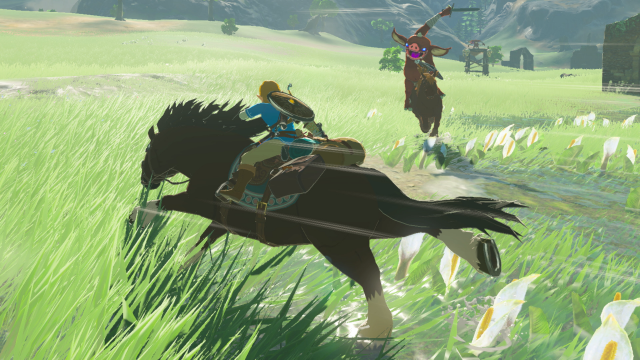
Horsin’ Around
Horses are the base mode of transport in both games. Sure, using a horse isn’t as practical in Breath of the Wild, given how much climbing, paragliding, and fast-travelling you do, but with 15 stables in Hyrule, you’re never far from being able to mount a trusty steed.
Both games start with their characters in very different places. In Red Dead 2, we're dropped into the shoes of Arthur Morgan, during the final days of Dutch's Gang. Arthur has been with Dutch and Hosea for the better part of 20 years, and when the game starts, their gang has fled into the mountains as they are on the run after a botched robbery in Blackwater. Horses are their primary means of transportation; without them, they simply wouldn’t survive. Arthur literally starts the game on horseback, and that intimate tie to horses never changes.
In Breath of the Wild, we're concerned with events that happened 100, before the Great Calamity. Link is essentially born again, naked, with no memory and nothing to his name. He finds clothes, weapons, and food and before long, gains access to several otherworldly abilities. Link begins his journey on foot, then learns to glide, and then moves to horseback.
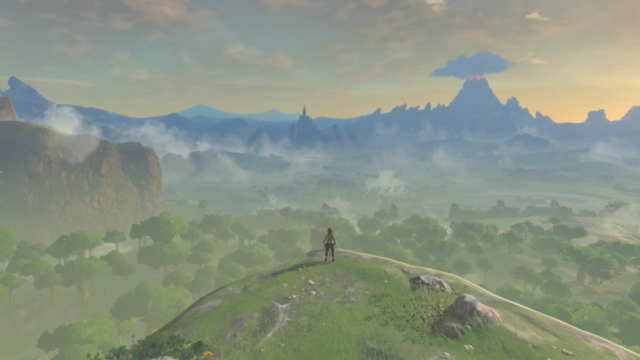
Horses may not be central to the massive Zelda franchise but they are still a considerable part of the fabric of Breath of the Wild. Horses are part of the “Wild” of the title, after all. They’re not a commodity that can simply be bought; instead, they’re out in the world, one species among the many that comprise the title’s vibrant ecology. Catching a wild horse makes a huge difference in getting around the world — particularly early on — as Link doesn’t have much stamina to work with and thus is slower on foot. Notably, catching your horse also teaches essential skills that are valuable throughout the rest of the game, i.e., how to be stealthy and how to hunt.
In Arthur’s world, horses are more of a commodity, underpinning life in America at this time in such a fundamental way that they’re ever-present. As such, while wild horses can be caught and tamed, the player’s relationship to horses in the early game is more about buying and selling (or stealing) them. Much like Zelda, however, it’s not really about having a full stable; players are encouraged to focus on bonding with a single horse. After all, you spend so much time on horseback that working as a team with your steed is paramount.
Do Go Chasing Stables
Having relatively convenient access to your horse is important, so stables play a central role in both entries. There are, however, some key differences. Both games use them as a place to store and retrieve horses, but in Red Dead 2, they’re also places to buy new horses — with the horses available varying between stables and changing over time. These stables also stock a dizzying array of new saddles, saddle horns, saddle bags, stirrups, bedrolls, and so on. You can also change the look of your horse’s mane and tail, buy provisions for it, and change the colour and design of almost every part of its tack. It’s typically granular, detail-oriented Rockstar stuff.
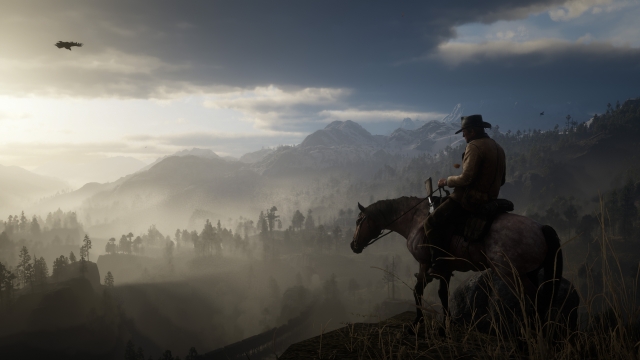
In Breath of the Wild, horses — like weapons, bows and shields — can’t be purchased, so a stable is a place to register a wild horse you’ve caught. Registered steeds can then be stored and retrieved from stables around the world. Some stables can be used to change your horse’s mane design, saddle, and bridle, but only those with stable attendants. Stables in Breath of the Wild take on broader roles — inns, cooking locations, places to buy crafting components, and most importantly, quest hubs. Clues are in the forms of books and paintings, and characters who need help or give help.
Red Dead 2 has all these elements, but they’re bundled into its open world. You can stop and set up camp, allowing you to cook and craft by the fire and, of course, to pass the time by sleeping. Breath of the Wild will enable players to build fires to advance time, but cooking is restricted to specific locations. Red Dead 2 also uses procedural encounters. These range from helping someone trapped under a horse to larger hunts and the like.
Both games have core story quests that occur at specific locations. Red Dead 2, however, really pushes procedural encounters to their limit. Breath of the Wild’s designers wanted to set Hyrule's density precisely. You could say that the shrines are similar to the quests — or encounters — that players happen upon in Red Dead 2 as players stumble into them out in the wild and are never too sure what kind of challenge awaits. But I say nay; let’s get back to horses.

Both games emphasise bonding with your horse, but Red Dead 2 sees this as a more prolonged process that happens naturally over an extended period. For instance, time spent in the saddle and with your horse is one of the key ways your bond grows. You are generally taking care of your horse, too – feeding it when it’s hungry, grooming it, and reassuring it when it’s agitated. With four tiers to work through, horse bonding in Red Dead 2 takes time, and the rewards are gradual– its health and stamina rise, it can be called from further away, you can do skid turns and stops, and so on. At maximum bond, your horse can also do piaffe dressage. It’s not that exciting. It is, however, fancy.
Your bond with your horse ultimately does boil down to a single number in Red Dead 2 – it’s very much a level-based XP system — but that’s much less obvious than in Breath of the Wild, which is very simple and predictable. Your bond with your horse in Breath of the Wild is represented by a single meter and number, all you have to do is max that out. Building the meter can be done through reassurance and positive reinforcement – pat your horse when it’s doing what you want it to — but you can also simplify the system by standing in front of it with an armful of apples and letting it eat them all, then grabbing another armful and so on. Instant bond!
Horses may provide convenience in both games – just whistle, and it’ll come to you! – but the bonding process is designed to make players feel a deeper connection, if not a partnership and encourages a commitment to keeping your horse safe. Bonding makes a tangible difference to gameplay too.
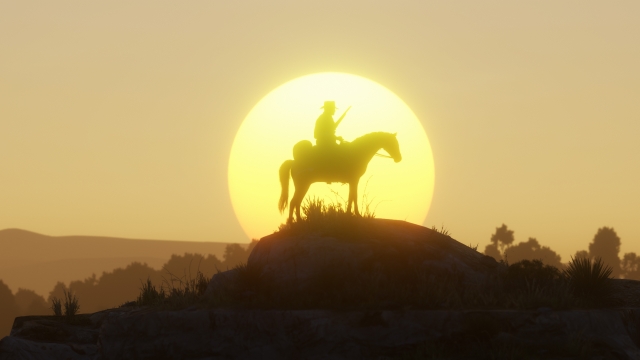
Both games boil the abilities of horses down to quantifiable traits, but as you’d expect, Red Dead 2 implements them with more complexity. Your horse has several base stats, and health and stamina can be improved through bonding, while speed and acceleration can be improved – to a limit based on the breed and the individual horse – through better stirrups. Meanwhile, better saddles can impact your horse’s stamina and health cores, and saddlebags can boost the storage of several things. It’s all pretty full on, particularly when you factor in all the cosmetic options.
Your horse’s base stats reflect its breed, and those same stats also largely determine the handling type your horse has, including heavy, standard, racing, or elite. Racing horses, for instance, are typically fast but have low stamina and health, whereas heavy horses can take more punishment but are slower and more unwieldy. Once you’re out in the world, you need to pay attention to your horse’s stamina and health, as riding it too hard can exhaust it, and getting into gunfights on horseback will chip away at its health. Thankfully, this videogame has a variety of food and tonics to remedy those problems instantly.
Horses also have base stats in Breath of the Wild – strength, speed, stamina, and temperament – which impact how each horse handles. The only thing you have to pay attention to while riding, however, is how many times you’ve spurred your horse – the number of spurs you have is based on its stamina, and they regenerate quickly after being used. Different saddles and bridles must be found around the world or earned – they cannot be purchased. They’re all purely cosmetic choices, aside from one exception: the Ancient Horse Armor set, which gives your horse additional stamina and allows you to summon it. This gear, which was introduced with the Champions’ Ballad DLC, shifted the focus more toward player convenience, rather than trying to uphold realism.
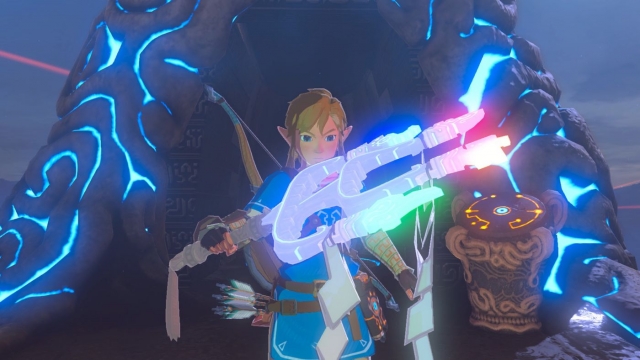
Oops! I did it again.
Breath of the Wild limits what Link can carry, and it’s deliberately game-like in nature – the amount you can take isn’t based on anything real. Quite the opposite, it’s based on how many koroks you’ve taken to a magical forest spirit for his magical maracas.
There’s a similar difference in how, erm, accidents are handled in each game. In Red Dead 2, if you spur your horse off a high ledge or get caught in the crossfire during a heavy gunfight, you can be seriously injured or even die. A badly injured horse can, thankfully, be brought back with Horse Reviver – a widely available item you should always have in your inventory. If a horse dies, however, that’s it. It’s gone, and all that work bonding with it has been for nought.
Horses aren’t injured in the same way in Breath of the Wild, but they can be killed if you decide to ride into battle against a Lynel or “accidentally” hit it with a series of bomb arrows. And when that happens, it’s time to pay a visit to the horse god Malanya (at a special fairy fountain), who can bring any horse back. Interestingly, Malanya will make a judgement call about whether you deliberately killed the horse or not and chastise you for it if necessary. Still, it never stops him from bringing it back.
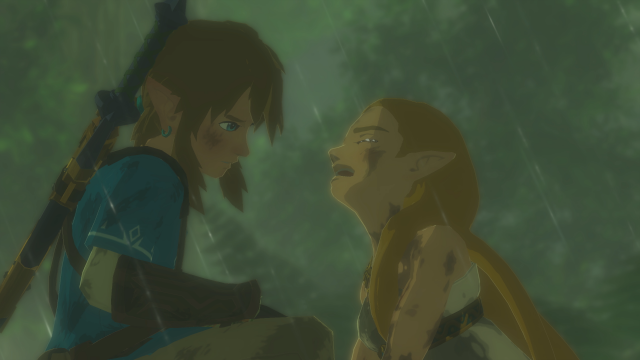
Giddy Up!
From a functional perspective, horses' roles in both games are to simply make getting around their worlds more convenient, but that has been used as a jumping-off point to do much more. Horses have been woven into the very fabric of both worlds.
For Red Dead 2, that’s not a choice. The game is tied to a realistic depiction of a particular part of the world at a specific time. As such, horses are non-negotiable: the world would not function or make sense without them. Given that, it also makes sense for the relationship between Arthur and his horse(s) to have real-world value – history, stakes. Losing a horse is a big deal in this setting. In a broad sense, the epoch defines many of the boundaries of Red Dead 2’s design.
On the other hand, Breath of the Wild’s designers had much more freedom in implementing many of the same concepts. You can play almost the entire game without ever even riding a horse, should you choose.
This core discrepancy reflects the differences in approach that underpin both titles on a fundamental level. Once you get off the plateau in Breath of the Wild, for instance, you can go in any direction and tackle the shrines and Divine Beasts in any order. Breath of the Wild’s massive open world is designed as an open-ended sandbox where there’s a little direction and a lot to puzzle out.
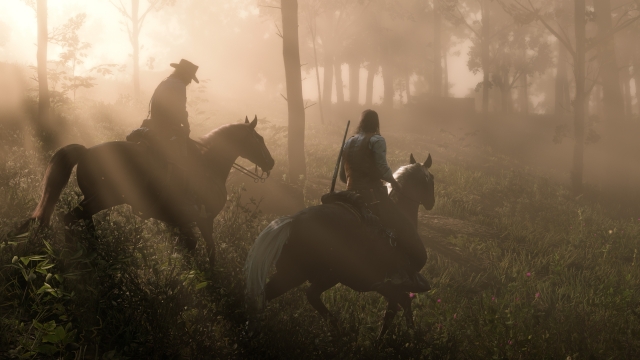
Red Dead 2 also opens up once you get out of the mountains, but it has a story to tell and wants you to live in this world – as Arthur, specifically – in a way that makes sense. So yes, you can simply go exploring, but there’s more friction there – it’s not the game's purpose. Red Dead 2 has more boundaries, but within those boundaries, we see Rockstar strive for its trademark attention to detail, heightened verisimilitude, and incredible emergent moments.
Both approaches push the limits of open-world gaming but do so with radically different player journeys in mind. The philosophies behind these journeys are born out of hundreds of decisions – large and small – and the result is two distinct interpretations of the same basic idea that have a lot in common.










COMMENTS